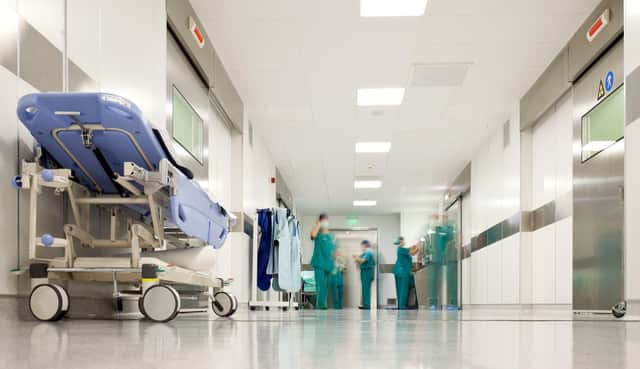NHS leaders looking to fill thousands of vacancies in West Yorkshire


The latest figures show there are 3,713 vacancies in the NHS in West Yorkshire, which is almost 6 per cent of the total workforce.
More than 40 per cent (1,525) of those vacancies are in nursing, midwifery and health visiting positions.
Advertisement
Hide AdAdvertisement
Hide AdWest Yorkshire Integrated Care Board (ICB) said NHS organisations are finding it difficult to fill many vacancies and when they are short staffed and stretched, they struggle to retain workers.
It comes as the ICB, which commissions NHS services, is aiming to ensure there are an additional 3,931 full-time NHS workers in place by 2027, so they can help meet rising demand for care.
“Improvements in our ability to attract, train and retain more colleagues will naturally enhance the resilience of the workforce and thus support the delivery of quality care services to the residents and communities of West Yorkshire,” it stated in a report.
NHS organisations across the country are facing similar shortages. Official figures show there were 133,446 vacancies in September 2022, including 47,496 vacant nursing roles.
Advertisement
Hide AdAdvertisement
Hide AdIn West Yorkshire, the ICB is also working to reduce the number of sickness absences and the staff turnover rate, as the latest figures show almost 14 per cent of NHS workers left their position in the 12 months ending in September 2022.
It said there are clearly issues with “low morale” due to the challenges of meeting exceptionally high levels of demand in the winter months and clearing the backlog of patients waiting for routine treatment during the pandemic.
Nurses and ambulance wordkers are also taking part in a series of strikes, amid rows over pay, and junior doctors are voting on whether to take industrial action.
It comes as the NHS is in the midst of its worst winter on record for A&E waiting times and ambulance handover delays, as stretched hospitals across the country are struggling to find beds for new admissions, and the Government has been told around 500 people are dying each week because of delays in emergency care.
Advertisement
Hide AdAdvertisement
Hide AdDr Brian McGregor, chair of British Medical Association’s Yorkshire Regional Council, has warned that exhausted staff throughout the system, including those who work in GP surgeries, hospitals and the community, are struggling to cope with mounting pressure.
He also said the NHS does not have the capacity to meet current demand, because the number of staff and hospital beds has been “shrinking relentlessly” over the last decade due to underinvestment.
“Staffing is a big issue and you can't just train people overnight,” he said. “We need to look at how we can retain people and stop them leaving.
“But at the moment the job is so difficult and the wellbeing of staff is so poorly cared for that we're struggling to retain people at every level.”
Advertisement
Hide AdAdvertisement
Hide AdThe Department of Health said it will invest an extra £14.1bn in health and social care over the next two years.
A spokesman added: “This includes investing an additional £500m to speed up the safe discharge of patients from hospital, creating the equivalent of 7,000 more beds nationally and establishing 24/7 data driven system control centres in every local area to manage demand and capacity.
“There are record numbers of nurses and doctors working in the NHS – with almost 4,700 more doctors and over 10,500 more nurses compared to October 2021.”